The Greatest College Football Rivalries
of All Time
The Greatest College Football Rivalries
of All Time
The Civil War, the Iron Bowl,
and Other Memorable Matchups
Martin Gitlin
ROWMAN & LITTLEFIELD
Lanham Boulder New York London
Published by Rowman & Littlefield
A wholly owned subsidiary of The Rowman & Littlefield Publishing Group, Inc.
4501 Forbes Boulevard, Suite 200, Lanham, Maryland 20706
www.rowman.com
16 Carlisle Street, London W1D 3BT, United Kingdom
Copyright 2014 by Rowman & Littlefield
All rights reserved. No part of this book may be reproduced in any form or by any electronic or mechanical means, including information storage and retrieval systems, without written permission from the publisher, except by a reviewer who may quote passages in a review.
British Library Cataloguing in Publication Information Available
Library of Congress Cataloging-in-Publication Data
Gitlin, Marty.
The greatest college football rivalries of all time : the Civil War, the Iron Bowl, and other memorable matchups / Martin Gitlin.
pages cm.
Includes bibliographical references and index.
ISBN 978-1-4422-2983-9 (cloth : alk. paper) -- ISBN 978-1-4422-2984-6 (ebook) 1. Football--United States--History. 2. Sports rivalries--United States. I. Title.
GV950.G57 2014
796.332'63--dc23
2014009231
 TM The paper used in this publication meets the minimum requirements of American National Standard for Information Sciences Permanence of Paper for Printed Library Materials, ANSI/NISO Z39.48-1992.
TM The paper used in this publication meets the minimum requirements of American National Standard for Information Sciences Permanence of Paper for Printed Library Materials, ANSI/NISO Z39.48-1992.
Printed in the United States of America
Introduction
Thousands of football games are played on college campuses every fall. Winter bowl games eventually produce champions. But only a comparatively few bring fans to an emotional crescendo regardless of importance to conference standing or drive for a title.
Those battles are part of the greatest rivalries in the history of the sport. They are the annual showdowns backed by tradition. The motivation is not merely victory but bragging rights for a year. Greatness of team and talent has certainly added to the legend of particular rivalries, but others have remained as vibrant as ever to their participants and fans despite gridiron mediocrity and national insignificance.
The magnitude of the college football rivalries that have earned a place in this book have often been based on geography. The Iron Bowl battle between Auburn and Alabama or small-college clash between Pennsylvania neighbors Lehigh and Lafayette would have never grown to such epic proportions had they not been backyard brawls. It can also be argued that such rivalries as Ohio StateMichigan, GeorgiaFlorida, and TexasOklahoma have been fueled in part by proximity. But tradition has proven to be the fuel that drives even those rivalries and certainly those without geographic ties, such as Southern California vs. Notre Dame and Army vs. Navy.
This is not to discount the influence of great players, coaches, and teams in raising the status of particular rivalries to the level of legend. Dozens of future College Football Hall of Fame and even NFL Hall of Fame talents have peppered the rosters of many teams included in this book. Many of the greatest teams in college football history steamrolled to championships, some by virtue of historic victories over their archrivals. Classic clashes on the football field have done more to establish and maintain the greatest rivalries in the history of the sport than anything else. This book highlights those games.
It also highlights fan passion and the intensity of the rivalry participants. Everyone involved in college football gives of himself or herself emotionally to every game on a schedule. But that level of interest and emotional investment is raised to a fever pitch when rivalry week rolls around. To many players, coaches, and fans, a season cannot be a success without a victory over their traditional rival. The dates for that battle alone are circled on the calendar.
So to those who do or do not feel a personal attachment to a particular rivalry, this book should prove entertaining and enlightening. Enjoy.
Chapter 1
Ohio State vs. Michigan:
Woody, Bo, and Beyond
No Big Ten title clash has ever been viewed as a more likely mismatch than the one played at Michigan Stadium on November 22, 1969.
The Wolverines entered their annual showdown against Ohio State as a 15-point underdog despite the home venue. Coach Woody Hayes had been firmly established as a legend. His Buckeyes were considered by many the finest college football team ever assembled. They had won 22 consecutive games. They were the defending national champions. They had not merely defeated their first nine opponents that seasonthey had annihilated one and all by an average score of 418. They were coming off a 4214 trouncing of explosive, 10th-ranked Purdue, which had been averaging 37 points a game. They had been ranked first in the nation from the first kickoff of the first game. They had not lost in more than two years.
Michigan, on the other hand, was a pedestrian 72 under rookie head coach Bo Schembechler. The Wolverines had experienced lopsided defeats to Missouri and Michigan State. They forged losing records in four of their previous seven seasons and were no longer considered a national power.
But, to paraphrase a rock-and-roll hit from the era, something was happening here. While the Buckeyes were rolling merrily along, the Wolverines were hitting their stride. They rolled into the showdown on a dominant four-game winning streak in which they had outscored their opponents 17822. It had taken them half a season to embrace the offensive and defensive systems, grueling practices, and win-at-all-costs mind-set demanded by Schembechler. But they were playing as well as any team in the nation by November 22at least any team not housed in Columbus, Ohio.
Schembechler was a man possessed heading into the showdown against the Buckeyes. He forced wife Millie to sleep in the babys room so neither would disturb his concentration as he prepared a game plan. He barely showed any gratitude the Thursday before the game when she prepared his favorite dinnerSouthern-style chicken and dumplings.
The stage was set. More than 103,000 streamed into the mammoth bowl in Ann Arbor, Michigan. Millions more settled in to watch the game on national television. Schembechler claimed he knew his team would win after it had clobbered Iowa, 516, the previous week. But he could not express such confidence to the media lest he awaken what he hoped was a sleeping giant and overconfident Ohio State bunch. We cant lay an egg today, Schembechler merely exclaimed. We have come to win.
Schembechler had designed his defense to stymie versatile All-American quarterback Rex Kern at the expense of limiting battering-ram fullback Jim Otis. But Kern rolled left and raced 25 yards to the Michigan 31 to start the game. Indeed, the Buckeye steamroller appeared to be in full throttle. But this was not the same Wolverines team that had lost to Ohio State the previous two years, including a 5014 shellacking in 1968. Schembechler made certain of that by having that score stenciled on the scarlet-and-white jerseys worn by the scout team in practices. They halted that drive, fell behind 60 on an Otis touchdown run, then forged ahead 76 on a 55-yard march engineered by quarterback Don Moorhead. It marked the first deficit faced by the Buckeyes all season.
The team traded touchdowns before Wolverines defensive back Barry Pierson played hero in another role. He scooted 60 yards on a punt return to the 3-yard line to set up a touchdown that gave his team a 2112 lead and put the Buckeyes on their heels for the first time that year. Playing in comeback mode was not a strong suit for an offense saddled with the three yards and a cloud of dust philosophy that had been the signature of Ohio State coach Woody Hayes since he took over the program in 1951.
Next page

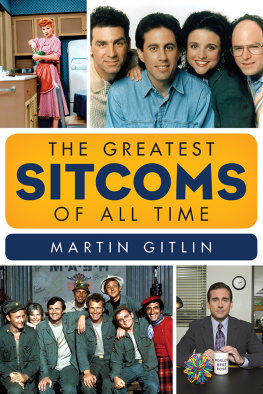




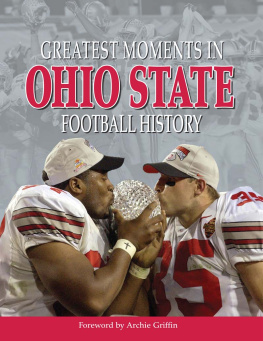

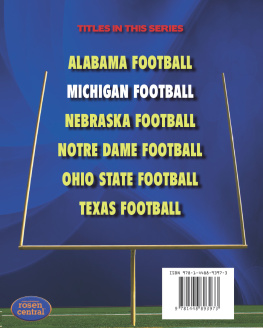
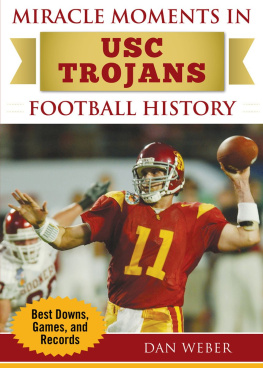
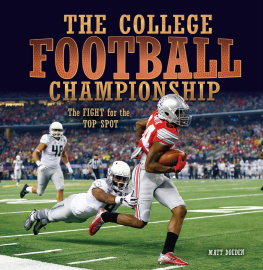
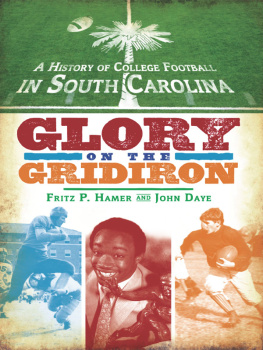
 TM The paper used in this publication meets the minimum requirements of American National Standard for Information Sciences Permanence of Paper for Printed Library Materials, ANSI/NISO Z39.48-1992.
TM The paper used in this publication meets the minimum requirements of American National Standard for Information Sciences Permanence of Paper for Printed Library Materials, ANSI/NISO Z39.48-1992.